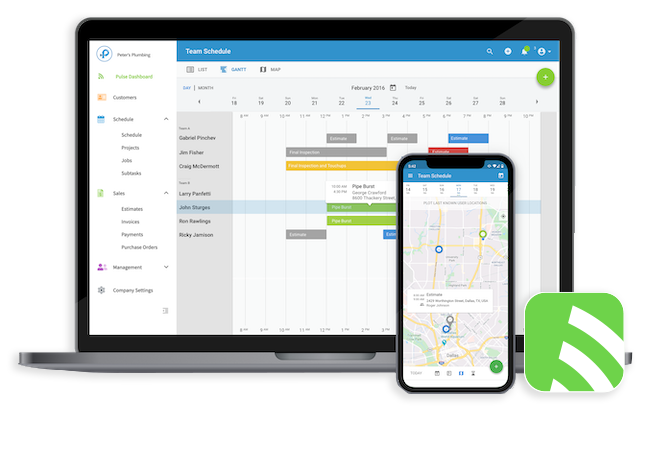Once you’ve wrapped the service call, you’ll have the opportunity to upsell your customer. The trick, however, is figuring out how to upsell your customer without coming off as pushy, or worse, car salesman-esque. Thankfully, there is a way to smoothly upsell your customer without annoying them.
Before you set out for the job, be sure that you understand how the service you’re about to perform fits into your overall services pipeline. For example, if the service call is to install a new HVAC system, you can recommend that they set up annual maintenance visits (and FieldPulse can make managing those agreements simple). This may sound obvious, but having a clear idea of the progression of your services will make it easier for you to recommend the proper upsell.
Another important aspect of upselling is knowing what questions to ask. Continuing with our previous example of an HVAC technician, ask your customer about their home’s comfortability. Is your home cooling down enough in the summer, and what are your electrical bills like? Questions like these help to spark engagement and get the customer thinking about further improvements.
Here’s a few examples of the questions you should be asking your customer, from the lens of a home remodeling contractor.
- If you could change one thing in your home, what would it be?
- What frustrates you the most about your home?
- How long do you plan to live in this house?
What kinds of projects are you thinking about long-term? - What’s something you notice about your house that guests never would?
Always be prepared to provide the customer with a clear and comprehensive list of your service offerings, and how those services interlink. If you’re looking to make an upsell, it’s essential to have your services and pricing information on hand at all times so the customer will know exactly what they’re getting into, and you can quickly close the sale.
The most important part of upselling is understanding that most of the time, the answer will be no. But, as long as you weren’t pushy or off-putting, take comfort in knowing that you’ll be the first person the customer thinks of when they do want to pursue that service. If it’s not possible to close the deal that day, try to get permission to follow-up. If a customer isn’t ready to commit on the spot, this means that the door will still be open further down the road.
Hopefully after reading this article, you’re feeling more confident in your sales abilities. Keep in mind that even the most talented salesmen have to start from ground zero, so don’t get frustrated with yourself if your first few sales pitches aren’t perfect.

